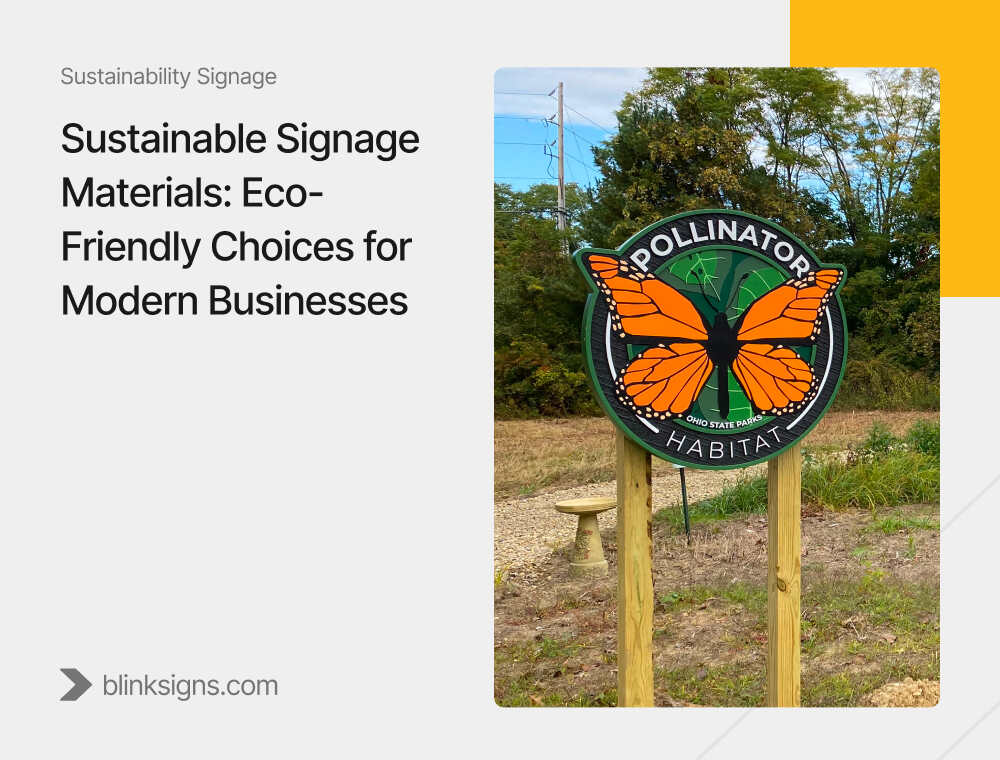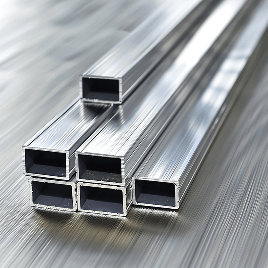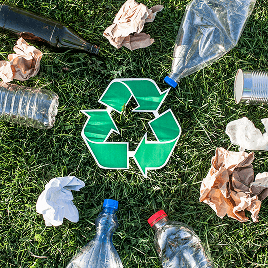
Sustainable Signage Materials: Eco-Friendly Choices for Modern Businesses
Signage That Speaks for the Planet and Your Brand
Modern business leaders don’t just want their signage to look good; they want it to mean something. For companies that care about environmental impact, outdated sign materials can send the wrong message. That’s why businesses across the U.S. are turning to sustainable signage options that reflect their brand values, meet evolving compliance requirements, and still deliver lasting visual impact.
At BlinkSigns, we’ve helped organizations nationwide make the shift to eco-conscious signage—from recycled aluminum monument signs to biodegradable event displays. With the right materials and strategy, your signage becomes more than a marker; it becomes a statement of responsibility and leadership.
Why Sustainable Signage Matters in Today’s Business Landscape

Sustainable Signage of MILE ‘O’
Consumers are becoming more selective. They’re asking:
“Does this business care about the environment as much as I do?”
Signage is often one of the first impressions a customer has of your brand, and materials matter. Choosing sustainable options isn’t just a feel-good initiative. It’s a strategic business decision that supports your reputation, aligns with your corporate social responsibility (CSR) goals, and even boosts compliance with LEED, EPA, or ISO 14001 standards.
For multi-location businesses, sustainable signage ensures brand consistency and environmental stewardship across regions. In areas like California, Oregon, New York, and Illinois, green building regulations increasingly favor energy-efficient and recyclable signage, making material choices a compliance issue, not just a creative one.
Key Benefits of Choosing Sustainable Signage:
- Boost brand credibility with eco-aware consumers
- Reduce energy and material waste over the sign’s lifecycle
- Earn credits toward LEED certification and building standards
- Lower total cost of ownership through long-lasting materials
- Align with global ESG initiatives and carbon reduction targets
At BlinkSigns, we work with procurement teams, facility managers, and marketing directors who need reliable signage that satisfies both design vision and sustainability goals, without delay or complications.
Top Eco-Friendly Signage Materials to Consider
Selecting the right sustainable signage material starts with understanding your environment, usage needs, and brand objectives. Below are some of the most effective materials we recommend to our clients across industries:
Recycled Aluminum: Durable and Fully Recyclable

Recycled aluminum is a frontrunner for exterior signs, especially monument and post signs. It resists rust, stands up to extreme weather, and is 100% recyclable, making it ideal for long-term branding solutions in outdoor environments.
Use Cases: Building signs, outdoor wayfinding, monument signage
FSC-Certified Wood & Reclaimed Timber: Natural Aesthetic, Ethical Source

For indoor environments where aesthetics matter, FSC-certified wood offers a blend of natural beauty and environmental responsibility. Reclaimed wood brings character and reduces the demand for virgin lumber.
Use Cases: Lobby signs, directional signage, brand walls
Bamboo Panels: Sleek, Sustainable, and Renewable

Bamboo grows rapidly and requires fewer resources than traditional wood, making it a renewable signage option with a modern, clean appearance. It’s perfect for interior applications that emphasize green design.
Use Cases: In-store signage, restaurant interiors, brand storytelling areas
Biodegradable Plastics & Recyclable Coroplast

For temporary or event signage, biodegradable plastics and recyclable Coroplast provide cost-effective, earth-friendly options. They’re lightweight, easy to transport, and break down responsibly after use.
Use Cases: Trade show signage, pop-up promotions, real estate signs
LED Illumination: Lower Energy, Higher Impact

Compared to neon or fluorescent lighting, LEDs offer superior energy efficiency and lifespan. For businesses seeking illuminated signs that reduce both electricity bills and environmental impact, LEDs are a must.
Use Cases: Channel letters, cabinet signs, backlit displays
📊 Eco Signage Materials Comparison Table
| Material | Eco Rating | Best Use Case | Recyclability | Lifespan |
| Recycled Aluminum | ★★★★★ | Outdoor Monument Signs | High | 10+ Years |
| FSC-Certified Wood | ★★★★☆ | Interior Lobby Signage | Moderate | 5–8 Years |
| Biodegradable Plastics | ★★★☆☆ | Temporary Signage | Compostable | Short Term |
| LED Lighting | ★★★★★ | Illuminated Signs | High | 50,000+ Hours |
| Bamboo Panels | ★★★★☆ | Interior Retail/Office | Biodegradable | 3–5 Years |
Certifications and Compliance: What Businesses Should Look For
Today’s signage decisions often intersect with building standards, sustainability mandates, and health regulations. Whether you’re pursuing LEED certification for a new headquarters or outfitting a facility that adheres to EPA environmental guidelines, your signage plays a crucial supporting role.

Certifications and Compliance for Sustainable Signage
Essential Sustainability Certifications:
- LEED (Leadership in Energy and Environmental Design)
Signage made from recycled, low-emission materials can contribute to LEED points, especially under Indoor Environmental Quality (EQ) and Materials and Resources (MR) credits. - FSC Certification (Forest Stewardship Council)
Ensures that wood products come from responsibly managed forests, minimizing biodiversity loss and habitat destruction. - ISO 14001 Compliance
Focuses on environmental management systems. Vendors like BlinkSigns that follow these principles reduce waste during the signage fabrication process. - EPA Safer Choice Guidelines
Relates to paints, adhesives, and inks used in signs, especially interior or ADA-compliant signage that requires non-toxic components.
For businesses with multi-location signage rollouts, compliance across jurisdictions becomes more complex. That’s where BlinkSigns comes in—with permits, documentation, and sustainability reporting handled by experts who understand local environmental codes.
Use Cases: Where Sustainable Signage Makes an Impact
Eco-friendly materials can be adapted for nearly every business type. But their impact is most visible in areas where signage volume, foot traffic, and public engagement are high.

Eco-friendly signage by BlinkSigns
Retail and Franchise Locations
Recyclable sign panels and LED lighting help franchises reduce waste across hundreds of locations. From storefronts to wayfinding, using modular and reusable signage aligns with brand-wide ESG initiatives.
Corporate Campuses and Offices
Lobby signs crafted from FSC-certified wood or reclaimed steel don’t just look professional—they show stakeholders and employees that your brand is serious about sustainability.
Hospitality and Real Estate
Eco-friendly monument signs, biodegradable open house signs, and solar-powered directional signage meet local code while reducing long-term energy and material costs.
Event and Conference Signage
Printed on biodegradable plastics or recyclable Coroplast, your branding for trade shows or pop-up events leaves no long-term waste. BlinkSigns offers reusable signage systems to further extend lifecycle value.
Lifecycle Approach: From Design to Responsible Disposal
Sustainability isn’t just about what your signs are made of—it’s also about how they’re made, used, and retired. BlinkSigns takes a cradle-to-cradle approach to every signage project, ensuring each stage reduces environmental impact.

🏭 Sustainable Fabrication Practices
- Energy-efficient manufacturing equipment
- Waste-minimizing CNC routing and precision cutting
- Digital proofs to reduce unnecessary material use
- Localized production hubs to reduce transportation emissions
🖌 Low-Impact Finishes
- Low-VOC paints and eco-solvent inks reduce indoor air pollution
- Non-toxic adhesives and laminates support indoor air quality standards
- UV-cured printing for minimal chemical off-gassing
🔁 End-of-Life Signage Management
- BlinkSigns offers recycling programs and vendor partnerships for proper disposal
- Modular components allow signs to be refreshed or reused
- Eco-labeling makes it easier for clients to sort and dispose responsibly
How BlinkSigns Makes Sustainability Simple for Your Brand
We know that most business leaders don’t have time to become experts in sustainable signage. That’s where we come in.
At BlinkSigns, we act as your trusted partner, helping you:
- Choose the right eco materials based on usage, climate, and lifespan
- Ensure regulatory compliance across states and cities
- Maintain visual consistency across locations and formats
- Manage supply chain and fabrication for faster, cleaner production
- Offer end-of-life recycling options and clear sustainability reporting
From first consultation to final install, we make sustainability feel less like a challenge and more like a smart branding choice.
FAQs on Sustainable Signage
Q1: Does sustainable signage cost more than traditional signage?
While upfront costs may be slightly higher for some materials, long-term savings come from reduced energy use, longer lifespans, and lower replacement needs.
Q2: Can I get illuminated signage that’s eco-friendly?
Yes. LED lighting uses 75% less energy than neon or fluorescent lighting and lasts longer with minimal maintenance.
Q3: Are there sustainable options for short-term or event signage?
Absolutely. BlinkSigns offers biodegradable plastics, recyclable substrates, and modular systems perfect for trade shows or pop-ups.
Q4: How does signage impact my LEED certification?
Signs made with recycled content, low-emission finishes, or that contribute to indoor air quality can support multiple LEED credits.
Q5: How do I dispose of old signage sustainably?
Ask us about our signage recycling partnerships and disposal best practices. We’ll help guide you through every step.
Conclusion: Make a Greener Statement with Every Sign
Sustainable signage isn’t just a trend—it’s a reflection of your brand’s values, foresight, and responsibility. Whether you’re launching a new location or updating existing assets, making eco-conscious choices in your signage strategy sends a clear, confident message to customers and communities alike.
At BlinkSigns, we believe good signage builds trust, and that includes trust in your environmental impact. Let’s build signage that supports your brand and the planet.